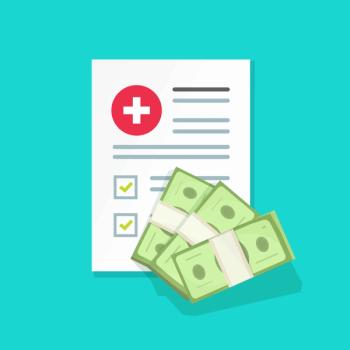
- MHE December 2021
- Volume 31
- Issue 12
Much of Rural America is a Healthcare Desert. Will the Dollar General Stores Be an Oasis?
The discount retailer signaled this summer that it was preparing to get into the delivery of healthcare.
Dollar General is poised to become the latest retailer to start providing healthcare. The discount retailer has hired a chief medical officer and announced that it is considering offering a variety of services — including telehealth, eye care and prescription pickup — as it focuses on rural areas that have been called “healthcare deserts” because options are so scarce.
At this point, Dollar General is playing its healthcare cards close to its chest. The company declined to discuss its plans with Managed Healthcare Executive®. But in a news release this summer, the company said it was positioning itself to be a provider in the country’s rural areas. “Our customers have told us that they would like to see increased access to affordable healthcare products and services in their communities,” CEO Todd Vasos said in the release. “Our goal is to build and enhance affordable healthcare offerings for our customers, especially in the rural communities we serve.” Dollar General, headquartered in suburban Nashville, Tennessee, has more than 17,000 stores. Even though it is a presence in rural America, the company says that 75% of the U.S. population lives within 5 miles of one of its locations.
The retailer also said it was increasing healthcare offerings such as cough and cold medications and dental products in many stores. The same announcement included the news that the company was appointing Albert Wu, M.D., to the new position of vice president and chief medical officer to develop the retailer’s healthcare services. The release said Wu, who came to Dollar General from McKinsey & Co., was tasked with “establishing and strengthening relationships with current and prospective healthcare product and service providers to build a comprehensive network of affordable services for DG (Dollar General) customers.”
Other retailers have started to provide healthcare. CVS pioneered retail healthcare with its MinuteClinics and has added HealthHUBs to provide chronic care management. Walgreens has partnered with VillageMD, and the two companies announced in mid-October that they are aiming to have 600 primary care practices operating in Walgreens stores by 2025 and 1,000 by 2027. Walmart has announced ambitious plans to provide healthcare, and it might be a competitor with Dollar General in some rural areas, although Walmart’s push into healthcare may be wavering.
In an August earnings call, Vasos talked about “healthcare deserts” and the role that his company could play in providing services in those areas. “It could be a really big deal, not only for our top line and bottom line at Dollar General, but even more so making (Dollar General stores) even more relevant to those consumers in rural America that have to drive now 30, 40 minutes for an eye exam as, an example, or even to see a doctor.”
Vasos did not offer many specifics but said Dollar General might offer services such as eye care, telemedicine and prescription pickup. He dismissed, though, the idea of the discount chain setting up in-house pharmacies. Vasos said the retailer would develop a game plan “over the next many quarters.”
Brock Slabach, chief operations officer at the National Rural Health Association, said his group would support Dollar General offering more healthcare services. “It’s important to expand access to care in rural communities.”The lack of healthcare providers in rural America is a long-standing problem. Rural hospitals have closed. Physicians have been in short supply for decades. But the problem has gotten some fresh attention, and “underserved” has been replaced by healthcare desert.
GoodRx, the prescription price comparison website, published a white paper on healthcare deserts in September. Using data from the federal government’s Health Resources & Services Administration and other sources and their own definitions of what constitutes a desert (usually a drive of some duration), the company researchers identified hospital, pharmacy and other kinds of healthcare deserts. For example, the GoodRx researchers said most people in 20% of the more than 3,000 counties in the U.S. live in hospital deserts, which they defined as areas requiring a drive of more than 30 minutes to reach the nearest hospital. They said that more than 40% of counties are pharmacy deserts, in which people must drive more than 15 minutes to get to a pharmacy. Whether a 15-minute trip to a pharmacy in a rural area constitutes the hardship implied by calling it a “pharmacy desert” might be debated.
The COVID-19 pandemic also underlined healthcare access and disparity issues, including the gaps between rural areas and the rest of the country. Kaiser Health News reported in September that 1 in 434 rural residents had died of COVID-19 since the pandemic began compared with 1 in 513 urban residents. And COVID-19 vaccination rates are much lower in rural areas. A study by Syracuse University found that as of early August, 46% of adults who lived in rural counties had been vaccinated compared with 60% of those living in urban counties.
Not a substitute
Peiyin Hung, Ph.D., an assistant professor at the Arnold School of Public Health at the University of South Carolina who focuses on rural health disparities, says Dollar General’s move into healthcare is “a very good and promising strategy,” particularly in view of the pandemic. “Two years ago, I wouldn’t have been so optimistic.” But much depends on which healthcare services will be offered by Dollar General, the experts say. If the retailer’s offerings have a telehealth component, it could be a major boon because the pandemic “has really woken up technology expansion,” Hung says. A complicating factor is that many rural residents do not have access to broadband. To be successful, if Dollar General offered telehealth services, it would have to serve as a complement to local providers rather than a substitute, Hung says.
Slabach agrees that anything the retailer might do to provide services “would need to be done in collaboration with the established local medical communities.”
Richard Tarpey, MBA, a professor of management at Middle Tennessee State University and a former executive at HCA Healthcare, says retailers “can only offer limited nonurgent and preventative services. The larger contribution occurs when stores partner or open their own clinics that can provide a wider range of nonurgent, low-cost and convenient services within their stores,” such as the care offered at some CVS and Walgreens locations.
An in-store clinic “is really how you would best serve a rural population,” Tarpey adds, because “lack of primary care services results in people getting sicker and needing acute care.”
Walmart has opened or is in the process of opening a handful of clinics in Georgia, Arkansas and Florida, but Tarpey says the retailer lacks locations in “really deep healthcare deserts.”
Walmart has started to send some mixed signals about its plans for getting into healthcare delivery. In an earnings call in August, CEO Doug McMillon said, “The work we did to build some clinics has been helpful, and I think we’ll have more clinics in the future. But the clinics aren’t the thing on its own.” McMillon talked about how Walmart was working to “stitch this whole thing together,” inclusive of telehealth, and “how you triage a customer when they start to interact with you to direct them to the place to get the right care at the right time.”
Perhaps Dollar General — and Walmart — can help meet rural healthcare needs, but they are not going to sweep away all the factors that have created the rural healthcare desert. In rural areas, “recruitment of providers is an extremely difficult thing these days,” Slabach notes. “It’s not easy to recruit someone to remote, rural areas.” Plus, the pandemic has put even more stress on providers, resulting in burnout, resignations and early retirement. “This has become the reality we’re all adjusting to at the moment,”
says Slabach.
Susan Ladika, a frequent contributor to Managed Healthcare Executive®,
is an independent journalist in Tampa, Florida, who writes about business
and healthcare.
Articles in this issue
almost 4 years ago
Oral and Dental Health is Crucial. But Access to Coverage is Spotty.almost 4 years ago
Digital Therapeutics Shaping the Future of Carealmost 4 years ago
Health Insurance Markets Are Concentrated — and Getting More Soabout 4 years ago
Is Cancer Screening Getting Back to Normal?about 4 years ago
It’s Steady as She Goes in Employer-Based Health Insuranceabout 4 years ago
Value-Based Care in Oncology Gets off to Shaky Startabout 4 years ago
NSCLC Therapy is Increasingly TargetedNewsletter
Get the latest industry news, event updates, and more from Managed healthcare Executive.





















































